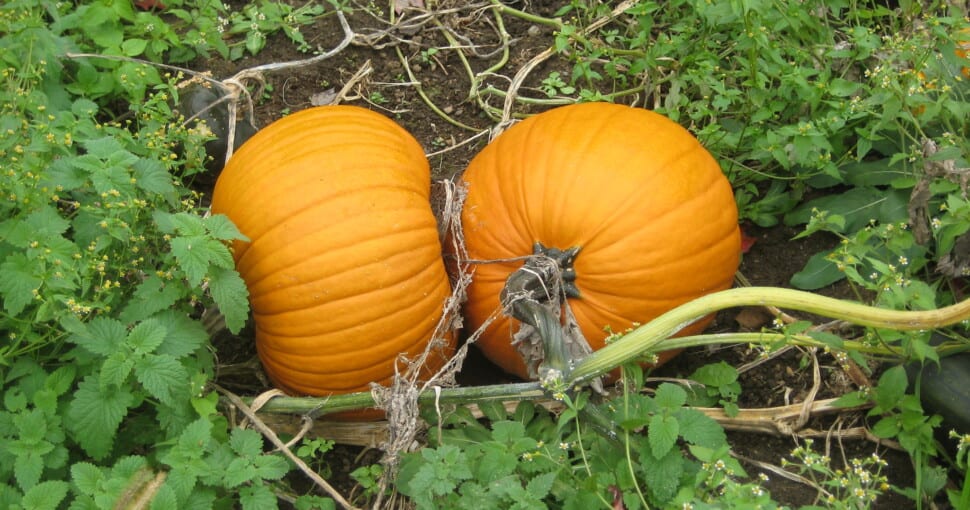Pumpkins have long been a staple food for many delicious culinary creations across many cultures. Pumpkins is another vernacular term used in place of squash or winter squash and form part of the Cucurbita genus. Pumpkin leaves are large and green and sprout from long viny tendrils that creep across the ground.
Contents
Several plants share characteristics that are similar to pumpkins. These plants include:
- Chinese Lantern – looks similar to a pumpkin. Their fruit is pumpkin shape and has an orange color.
- Pumpkin On A Stick – looks almost identical to pumpkin. Their shape, size, and color resemble immature pumpkins.
- Straightneck Squash – looks similar to pumpkin leaves and is almost indistinguishable when the squash hasn’t started forming yet.
- Surinam Cherry – has fruit that resembles tiny pumpkins. They are small and range from red to orange.
- Zucchini – before flowering and producing fruit, zucchini leaves have a similar shape and color to those found on pumpkin plants.
- Watermelon – leaves look very similar to those on pumpkin plants. Their leaves are large and dark green, sprouting from long stems that creep on the ground.
- Cantaloupe – looks similar to pumpkin. Their large, broad leaves sprout from thick stems, much like pumpkin leaves.
There are various plants that look like a pumpkin. Some require a lot of maintenance and care to cultivate, while others seemingly grow independently with minimal effort. Let’s look at these 7 plants resembling pumpkins more closely.
Related: 5 Plants That Look Like Pumpkin Leaves
1. Chinese Lantern (Physalis Alkekengi)
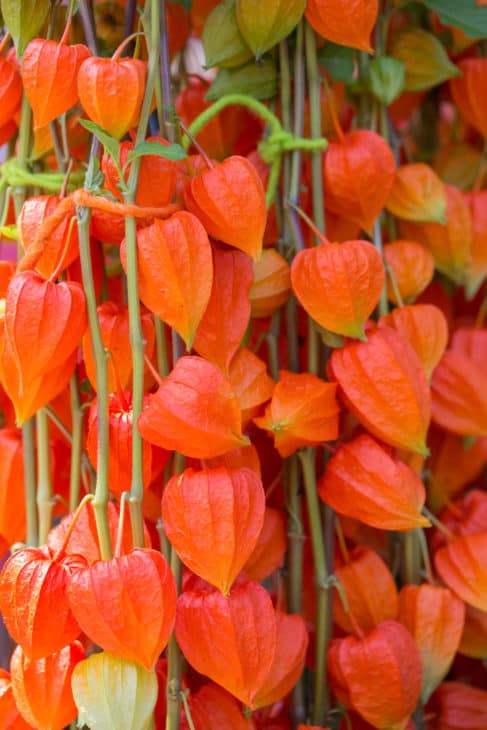
Chinese Lantern (Physalis Alkekengi), also called Winter Cherry, Cape Gooseberry, and Strawberry Ground Cherry is a spreading herbaceous perennial with green leaves and small white flowers. When summer has passed, small edible berries resembling pumpkins start to form where the blossoms used to be.
Chinese Lantern plants typically grow 30 inches tall and can cover almost 36 inches of the ground. Chinese Lanterns are very low maintenance and only require moderate irrigation. They do best when planted in acidic chalk, loam, or sandy soil.
Planting your Chinese Lantern in full to partial sunlight in well-drained soil will ensure they stay happy and healthy year-round. Caution must be taken when handling Chinese Lanterns since all parts of the plant, except its mature fruit, are toxic to humans and animals. Wearing gloves and eye protection when interacting with Chinese lanterns is strongly recommended.
2. Pumpkin On A Stick (Solanum Aethiopicum)
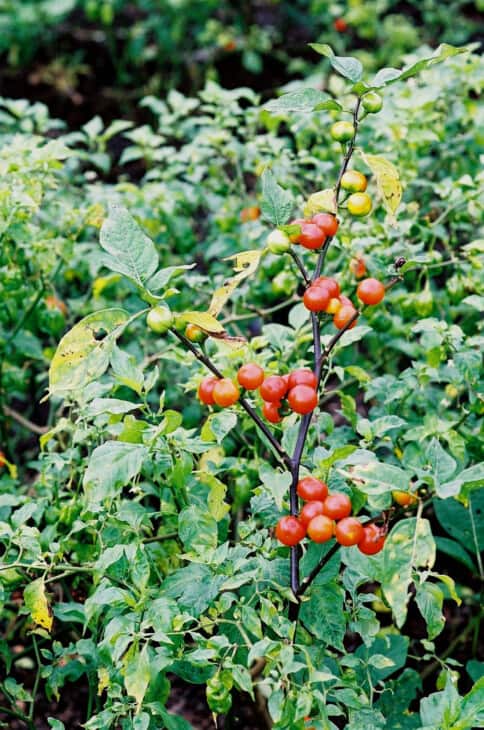
Pumpkin on a Stick (Solanum Aethiopicum) is native to Africa and contains many macro- and micronutrients. Many African communities depend heavily on Pumpkin on a Stick for their daily nutritional needs.
Pumpkin on a Stick looks like miniature pumpkins, where they get their name. Their small size and bright colors often make people think they are only immature pumpkins and will grow further if left alone. Pumpkin on a Stick can grow almost 8 feet tall and have large branches with leaves growing from their stems.
Pumpkin on a Stick do very well in hot weather but requires lots of water to stay healthy. They do not do particularly well in colder environments and cannot tolerate being water-logged. Planting Pumpkin on a Stick in well-drained soil in partial to full sunlight will give you a plant that stays healthy throughout the hot summer months, provided you tend to its needs regularly.
3. Straightneck Squash (Cucurbita Pepo Var. Recticollis)
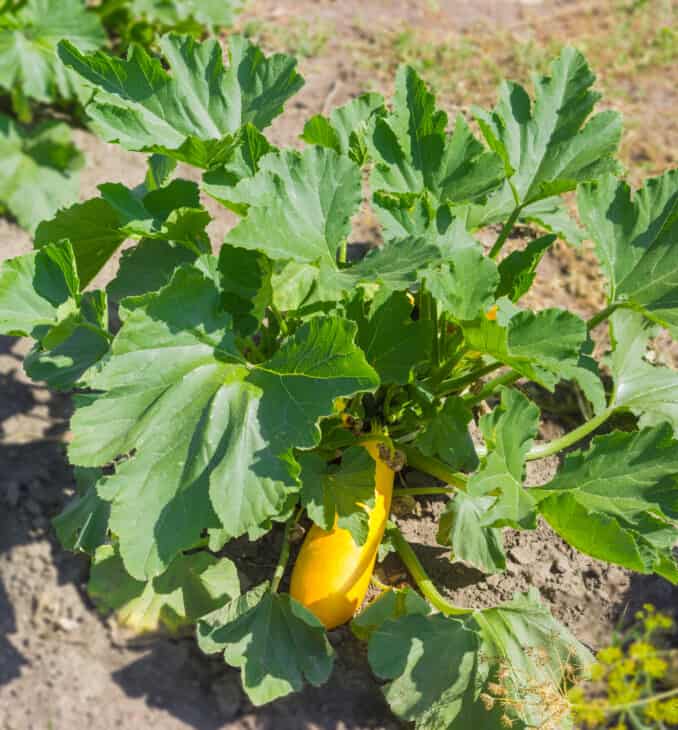
Straightneck Squash (Cucurbita Pepo Var. Recticollis) is a shrubby summer squash with yellow and gold fruit and bright green leaves similar to pumpkin leaves. They have long stems that narrow at their ends and are ideal for warmer climates.
Straightneck Squash must be planted in partial sunlight in well-drained soil and fertilized with liquid fertilizer at the start of each summer when their blossoms begin forming. Adding a few tablespoons of granular fertilizer per hill of three Straightneck Squash plants before planting will ensure your soil is in its optimal condition.
Straightneck Squash is extremely hardy and will hibernate during the cold winter months. It is perfect for new gardeners who want to dip their thumbs into the vast ocean of vegetable cultivation. Next time you are visiting your local nursery, consider picking up a few of these great plants.
4. Surinam Cherry (Eugenia Uniflora)
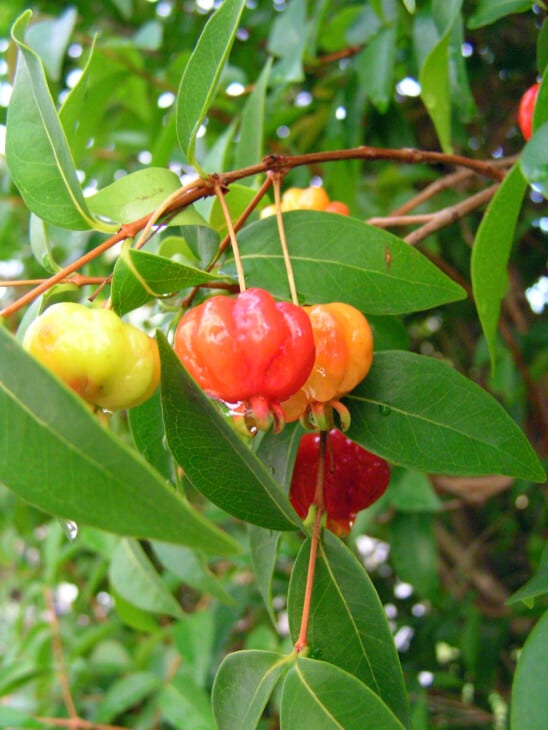
Surinam Cherry (Eugenia Uniflora) is a compact evergreen shrub that grows 30 feet tall. It has dark green leaves, white flowers, and small orange and yellow fruit that turn dark red when ripe. The fruit that grows on Surinam Cherry trees resembles miniature pumpkins.
Surinam Cherry trees are native to Brazil and grow in tropical climates. They thrive in damp environments and would require well-drained soil and lots of water if you want to plant them in your garden.
Surinam Cherry trees are considered an invasive species in some countries and would require you to investigate your local laws to ensure you aren’t illegally planting one on your property. If it is against the law to own a Surinam Cherry tree, you could face a fine or potentially time in jail.
5. Zucchini (Cucurbita Pepo)
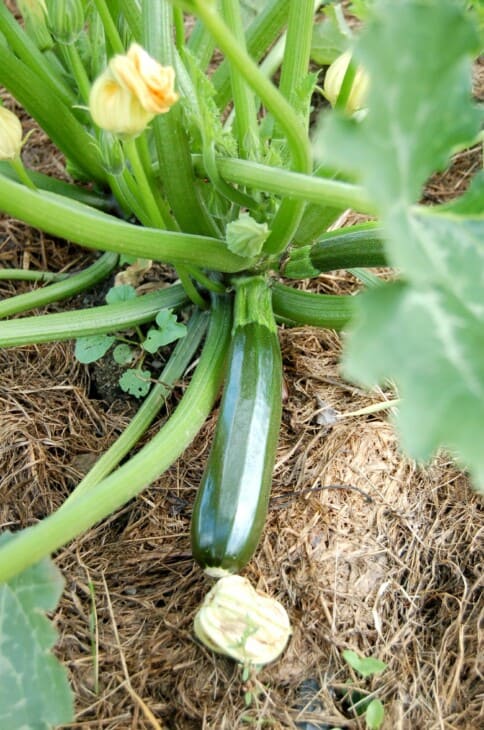
Zucchini (Cucurbita Pepo), sometimes called Courgette, is a summer squash in the gourd family. These edible fruits are great for home gardens and can readily be bought in most supermarkets. Zucchini plants are non-vining and bushy. Their large leaves resemble pumpkin leaves and are palmately lobed.
Zucchini must be planted in full sunlight in well-drained soil and covered in plenty of compost. Zucchini doesn’t tolerate frost at all and needs to be planted in warm climates. As long as you sufficiently space out your Zucchini when planting, they will naturally flourish without much maintenance.
Zucchinis are great for aspiring botanists and make for excellent meal additives. They grow fairly quickly and only require some liquid fertilizer when they begin to blossom. Consider trying your hand at growing a couple of Zucchinis if you are looking for a pumpkin-look-a-like.
6. Watermelon (Citrullus Lanatus)
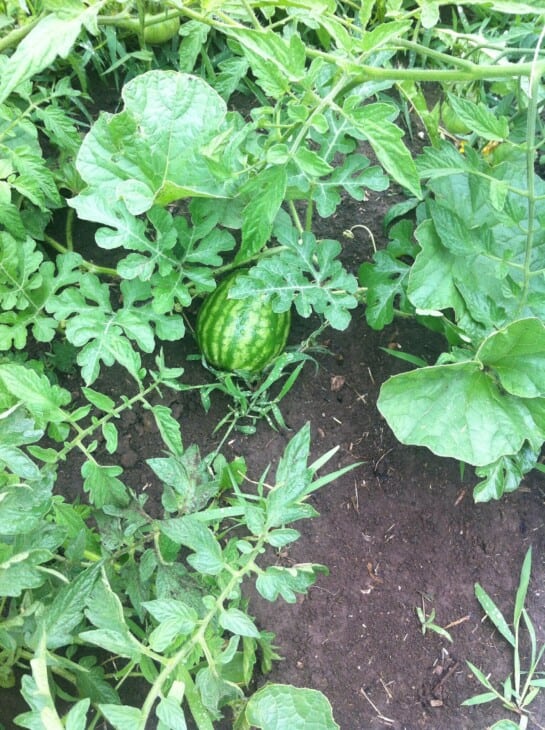
Watermelon (Citrullus Lanatus) is an annual, vining vegetable that looks like a pumpkin before its fleshy fruit starts growing. Their long, bright green leaves and small yellow flowers could easily be mistaken for pumpkin leaves by the untrained eye.
Watermelons need to be cultivated in gardens that offer at least 6 hours of direct sun daily. Watermelons must be planted in Silt that is pH Neutral. Its soil must also be well-draining and kept moist.
Watermelons thrive in coastal, mountainous, and Piedmont regions. If you are planning on growing some watermelons in your backyard, check your seasons first to ensure that your garden is adequately suited for these lovely little balls of pure joy.
Related: 5 Plants That Look Like Watermelon | When Are Watermelons In Season?
7. Cantaloupe (Cucumis Melo Var. Cantalupensis)
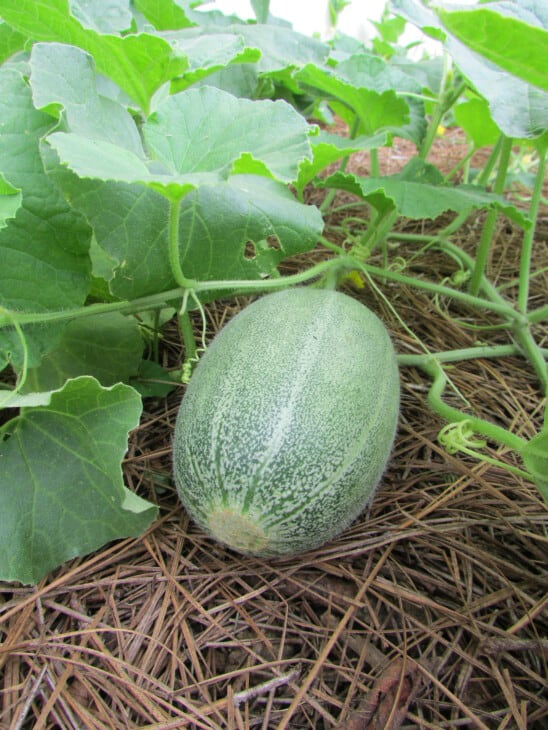
Cantaloupe (Cucumis Melo Var. Cantalupensis) is a member of the Cucurbitaceae family. This warm-season annual vine produces large fruits and is native to Asia. Cantaloupe most closely resembles pumpkin when still immature. Their long vines and large green and yellow leaves look almost identical to infant pumpkin plants.
Related: When Are Cantaloupes In Season?
Cantaloupe needs to be planted in direct sunlight in well-drained soil that stays moist and contains lots of organic matter like worms, mulch, and other forms of compost. Cantaloupe spreads over a large area and needs enough space to really stretch its vines, but it can be planted vertically if it has sufficient support.
Caring for cantaloupe long term could prove tricky as they are fairly susceptible to infection and prone to attracting many pests. Looking up a natural pest control guide that is suitable for your cantaloupe will ensure that it stays healthier for longer, and you’ll get to enjoy the fruits of your labor every year when the time is just right.

